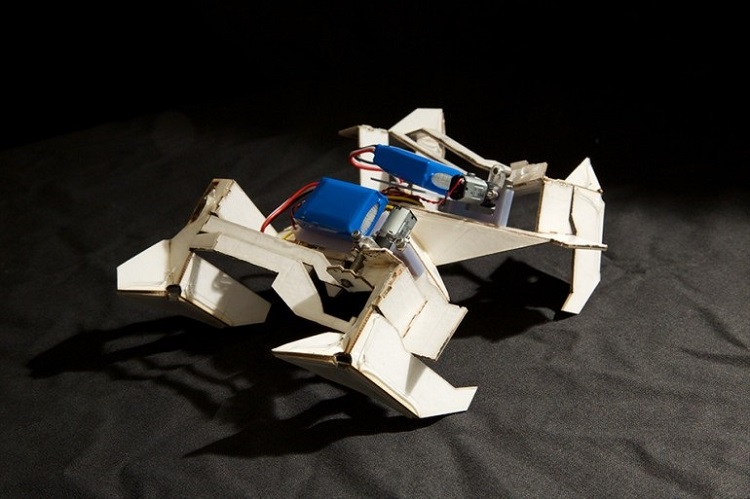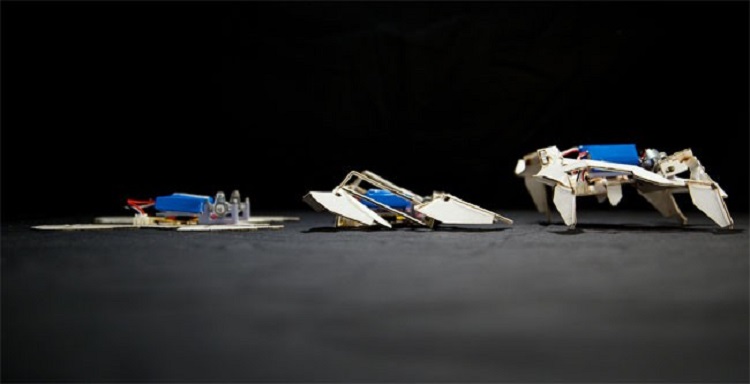
The combined mental prowess of Harvard University and MIT has yielded a special kind of self-assembling robot that folds up like origami and crawls away. The prototype, which is built almost entirely from laser-cut parts, transforms itself from a flat structure into a specific shape in under four minutes; once batteries are attached, the machine scuttles away at about 2 inches (5 cm) per second. The research — which is published in the journal Science — signifies the growing potential to quickly and inexpensively build sophisticated robots capable of autonomous assembly.

“Getting a robot to assemble itself autonomously and actually perform a function has been a milestone we've been chasing for many years,” said the research paper’s senior author Rob Wood, Ph.D., a Core Faculty member at the Wyss Institute for Biologically Inspired Engineering at Harvard University.
The origami robot is constructed from five layers of material all cut according to specific measurements. The central layer — which houses a network of electrical leads on a flexible circuit board — is sandwiched between two structural layers made from a composite of paper and polystyrene. The outer layers are made of shape-memory polymers that fold when heated. Next, a microprocessor and a small motor are placed on the top surface of the robot.
The design borrows heavily from the earlier self-assembling robot that the researchers revealed back in early June, which folded into its final shape after baking in an oven. But unlike this earlier project, the origami robot is the first of its kind to build itself and perform a function completely devoid of human intervention. “Here we created a full electromechanical system that was embedded into one flat sheet,” Says Sam Felton, MIT Ph.D. candidate and the study’s lead author.
Choosing to abide by the principles of origami has enabled the design to virtually shed all nuts and bolts. The folding is carried out by a series of hinges containing embedded circuitry that produce heat once the microcontroller gives the command; it’s this heat that actually triggers the paper-like composite material to self-fold. After about four minutes, the polystyrene hardens, activating the microcontroller sequence to make the robot crawl. This entire process consumes roughly the energy equivalent of a single AA alkaline battery.
The biggest challenge in executing this process is preventing the robot from burning, as each one runs on approximately 10 times the current running through a light bulb. Felton and team are experimenting with different memory foam concoctions that require less heat to activate but this is an excellent step in establishing the foundation for what will essentially become 3D-printed robots.
Via Harvard
Advertisement
Learn more about Electronic Products Magazine





